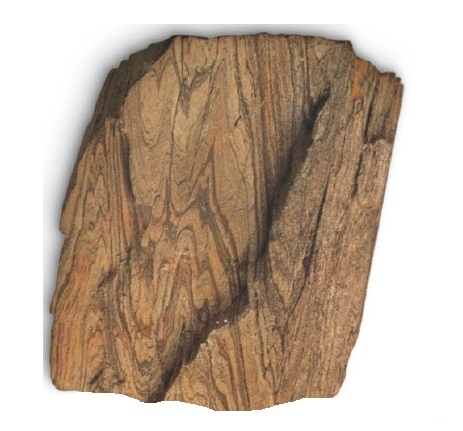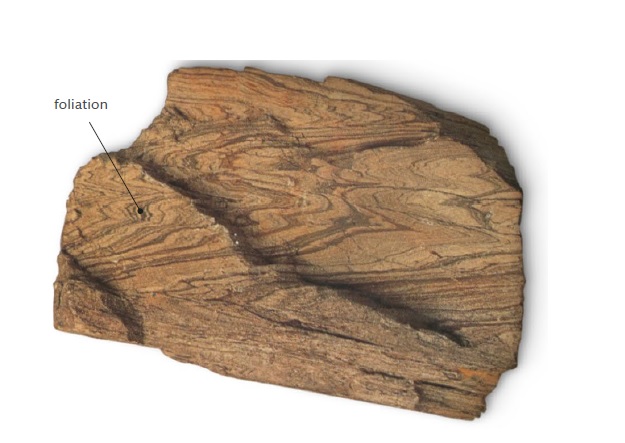Mylonite

Introduction
Mylonite, a fascinating metamorphic rock, stands as a testament to the geological forces that shape our planet. In this comprehensive article, we delve into the intricacies of mylonite, exploring its formation, classification, and unique characteristics. Join us on a journey through the geological processes that give rise to mylonite, from its origin in thrust zones to the intricate details of its texture and composition.
What is Mylonite rock?
Mylonite is a rock that undergoes profound deformation, resulting in a fine-grained structure. The minerals within mylonite are diverse, with a composition influenced by the rocks undergoing metamorphic alteration. Two main groups of material define mylonite: fragments of rock, known as “rock flour,” and minerals that crystallize during or after metamorphism. This rock can exhibit dark or light colors, and its texture is marked by deformation, leading to streaked-out structures and foliation in some cases.
Mylonite Characteristics:
- Group: METAMORPHIC
- Texture: Fine-grained structure with streaked-out patterns.
- Color: Varied, ranging from dark to light.
- Deformation: Result of large-scale thrust faults.
- Foliation: Visible in some coarser specimens.

Formation of Mylonite
Mylonites are formed through ductile deformation in fault zones, accumulating substantial shear strain. Various mechanisms, such as dislocation creep and diffusion creep, accommodate crystal-plastic deformation. Contrary to initial beliefs, mechanical abrasion by milling does not contribute significantly to mylonite formation. These rocks emerge at depths of at least 4 km, deep within the Earth’s crust.
Mechanisms of Crystal-Plastic Deformation:
- Dislocation Creep: Increases internal energy of crystals.
- Diffusion Creep: Becomes crucial at high temperatures and small grain sizes.
- Recrystallization: Reduces internal energy through grain-boundary migration.
Classification of Mylonites
Mylonites exhibit diverse classifications based on their characteristics. Understanding these classifications provides insights into the geological processes shaping mylonite.
Blastomylonites
Coarse-grained with a sugary appearance, often lacking distinct tectonic banding.
Ultramylonites
Undergo extreme grainsize reduction, appearing hard, dark, and cherty. Matrix grains comprise more than 90%, resembling pseudotachylite.
Mesomylonites
Undergo appreciable grainsize reduction, with matrix grains comprising between 50 and 90%.
Protomylonites
Experience limited grainsize reduction, with matrix grains comprising less than 50%. Relict grains and textures are apparent.
Phyllonites
Phyllosilicate-rich mylonites with a well-developed secondary shear fabric (C’).
Mylonite in Petrographic Microscope
Peridotitic mylonite observed under a petrographic microscope reveals the intricate details of its composition and structure.
Conclusion
In conclusion, mylonite serves as a geological marvel, shaped by intense deformation and metamorphism. From its formation in thrust zones to the diverse classifications based on grainsize reduction, mylonite stands as a testament to the dynamic forces shaping the Earth’s crust. This article has provided a comprehensive exploration of mylonite, aiming to unravel the mysteries held within this remarkable metamorphic rock.





